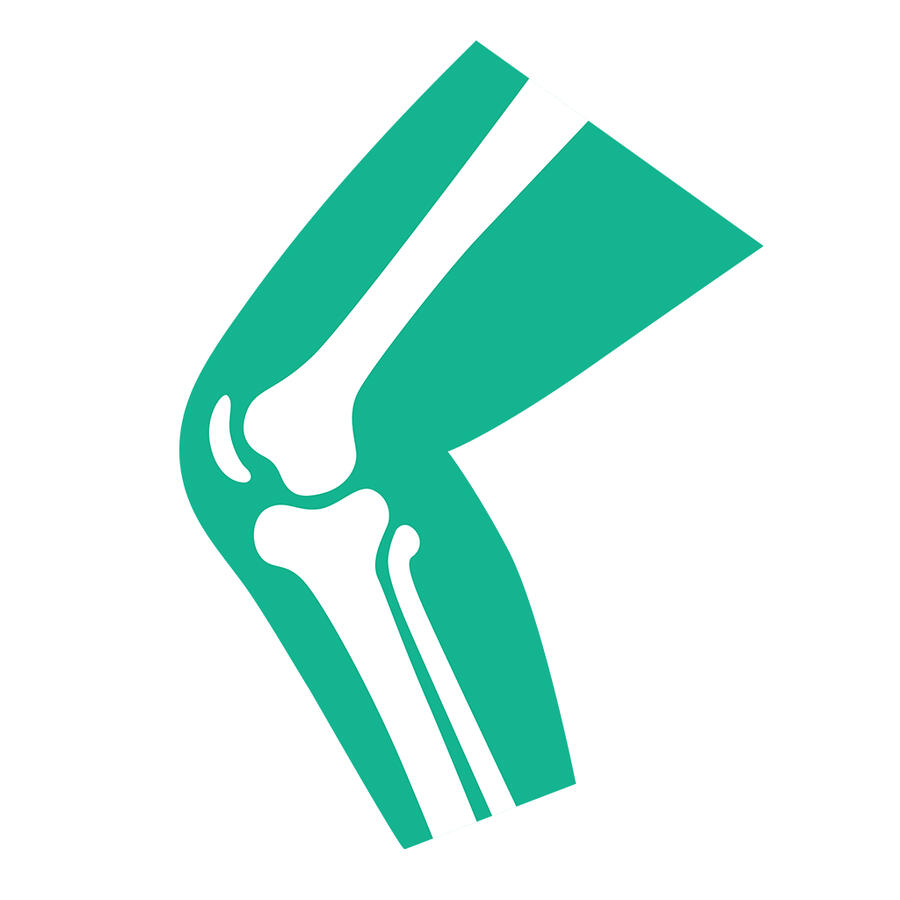3DMedical
3D Patient Education & Exercise Videos for Safer Recovery
Custom-branded content delivered in 30 languages

Keith Krugh MS
Exercise Science and Health Promotion
Web & Mobile App Development
3D Animation
Reducing Complications & Re-hospitalizations
"1 in 5 Medicare patients re-admitted within 30 days, costing $17B annually."
Mastering Orthopedic Brace Use at Home
"Brace misuse has led to an 18% increase in 30-day re-hospitalizations."
Simplifying complex information with Anatomy visuals
Featured App • The Knee App by Motion
Applying movement science principles, The Knee App addresses muscle imbalances that contribute to pain in specific areas of the knee. Each program features 3D Medical’s animations to guide users through foam rolling, stretching, and strengthening. Now downloaded in over 80 countries and completely free to use — tap the icon to learn more.
-
1. Heusdens, C. H. W., Roelant, E., & De Wachter, J. (2021).
Non-compliance with knee brace usage after anterior cruciate ligament reconstruction: A prospective study. Knee Surgery, Sports Traumatology, Arthroscopy, 29(8), 2543–2550.- Summary: 25% non-compliance post-ACL reconstruction, often due to discomfort or misunderstanding of brace use. Improper use caused delayed healing and instability.
- Relevance: 3D animations can improve patient understanding and correct usage of braces, reducing errors and complications.
-
2. Van der Weegen, W., Kornuijt, A., & Das, D. (2019).
Patient adherence to shoulder braces after rotator cuff repair: A multicenter study. Journal of Shoulder and Elbow Surgery, 28(6), 1120–1127.- Summary: A multicenter study examining post-rotator cuff repair brace adherence found a 20–30% misuse or failure rate. The primary reasons cited were poor patient understanding of fit and function, as well as discomfort due to incorrect positioning.
- Relevance: When patients don’t understand how to properly wear a brace, adherence drops dramatically. Using 3D animation to illustrate the correct fit and adjustments ensures they have a reliable visual reference to follow at home, improving compliance.
-
3. Rossi, M. J., & Lubowitz, J. H. (2020).
Elbow brace compliance and recovery outcomes following ulnar collateral ligament reconstruction. Orthopedic Journal of Sports Medicine, 8(5), 2325967120918945.- Summary: This study found that 15–20% of patients experienced prolonged recovery times due to improper elbow brace use after surgery. Misuse often resulted in reduced range of motion, increased stiffness, and longer rehabilitation times.
- Relevance: A delayed recovery due to improper brace use is entirely preventable with the right education. 3D animations provide an easy-to-follow, step-by-step guide that makes brace instructions clear and actionable, reducing unnecessary complications.
-
4. Dekker, A. E., Davis, D. E., & Abboud, J. A. (2022).
Brace adherence and readmission rates after foot and ankle surgery: A retrospective analysis. Foot & Ankle International, 43(3), 412–419.- Summary: Brace misuse led to an 18% increase in 30-day hospital readmissions. Non-compliance delayed healing and increased healthcare costs.
- Relevance: A visually engaging, easy-to-understand 3D animation can significantly improve patient adherence and reduce avoidable hospital visits.
-
5. Van der List, J. P., & DiFelice, G. S. (2018).
Web-based patient education in orthopedics: A systematic review. Journal of Medical Internet Research, 20(4), e143.- Summary: This systematic review analyzed 10 trials with 4,172 patients, concluding that digital education tools improved patient knowledge and satisfaction. However, while knowledge retention improved, anxiety and clinical outcomes remained unchanged.
- Relevance: Digital education is already proven to increase patient knowledge and satisfaction. Adding 3D animation takes it further, making instructions even more engaging and effective than static web-based content or printed materials.
-
6. McDonald, S., & Jones, A. R. (2020).
Improving resource utilization and outcomes after total knee arthroplasty through technology-enabled patient engagement. Journal of Orthopaedics, 17, 156–162.- Summary: Technology-enabled education reduced hospital stays by 2 days following total knee arthroplasty. Patients who received visual and interactive education showed higher adherence to recovery protocols, leading to better outcomes and lower costs.
- Relevance: A stronger, more engaging education approach translates to better patient adherence and faster recovery times. 3D animations simplify complex instructions, giving patients the tools they need to follow their recovery plan successfully.
-
7. Bernatz, J. T., & Anderson, P. A. (2015).
Thirty-day readmission rates in orthopedics: A systematic review and meta-analysis. PLOS ONE, 10(4), e0123593.- Summary: 30-day readmission rates in orthopedic procedures ranged from 4.8% to 6.0%, with common causes including poor adherence to post-op protocols and improper device use.
- Relevance: Clear 3D animations can dramatically improve patient understanding of post-op protocols, lowering the risk of complications and hospital readmission.
-
8. Wilson, E. A., et al. (2010).
Media and memory: The efficacy of video and print materials for promoting patient education about asthma. Patient Education and Counseling, 80(3), 393–398.- Summary: Animated videos were more effective than print materials for patient education, resulting in better health information retention.
- Relevance: Visual learning through 3D animations ensures patients retain vital post-op care instructions, improving outcomes and compliance.
-
9. Seymour, N. E., et al. (2002).
Virtual reality training improves operating room performance: Results of a randomized, double-blinded study. Annals of Surgery, 236(4), 458–464.- Summary: Surgical trainees who used VR made fewer errors and completed procedures more efficiently than those trained via traditional methods.
- Relevance: Similar to VR, 3D animations offer an enhanced, hands-on learning experience that boosts patient comprehension and adherence.
-
10. American Institutes for Research (AIR). (n.d.).
The Revolving Door: U.S. Hospital Readmissions by Diagnosis and Procedure. [Report].- Summary: Unplanned readmissions cost Medicare over $17 billion annually, with poor discharge planning and patient misunderstanding cited as key causes.
- Relevance: Providing clear, 3D visual post-op instructions can bridge the gap between hospital discharge and home care, reducing costly readmissions.
-
11. Office of Information Products and Data Analytics. (2012).
Medicare hospital readmissions statistics. U.S. Department of Health and Human Services.- Summary: 19.2% of Medicare patients are readmitted within 30 days of discharge, costing the healthcare system approximately $17.5 billion annually.
- Relevance: 3D visual demonstrations provided at discharge help patients retain key recovery information, significantly lowering preventable readmissions.
-
12. Auerbach, A. D., et al. (2016).
Preventability and causes of readmissions in a national cohort of general medicine patients. JAMA Internal Medicine, 176(4), 484–493.- Summary: 27% of 30-day readmissions were potentially preventable, with inadequate discharge instructions and poor follow-up being major contributors.
- Relevance: Simple, visual post-discharge instructions via 3D animations empower patients to better manage their recovery at home.
-
13. Dailey, E. A., et al. (2013).
Risk factors for readmission of orthopedic surgical patients. The Journal of Bone and Joint Surgery, 95(11), 1012–1019.- Summary: Risk factors for orthopedic readmissions include discharge to skilled nursing facilities and poor post-discharge care coordination.
- Relevance: 3D animations can ensure consistent patient understanding of recovery protocols, reducing confusion and avoidable readmissions.
-
14. Weiss, A. J., Elixhauser, A., & Steiner, C. (2014).
Readmissions to U.S. hospitals by procedure, 2010. Healthcare Cost and Utilization Project (HCUP) Statistical Brief #154.- Summary: Hospital readmissions cost the U.S. $41.3 billion in 2010, with joint replacement surgeries among the most common causes.
- Relevance: Better post-op education through visual formats like 3D animations can reduce errors, costs, and unnecessary readmissions.
-
15. Brown, M. M., et al. (2019).
Preoperative education for hip and knee replacement: A systematic review. Current Reviews in Musculoskeletal Medicine, 12(3), 302–310.- Summary: Preoperative education improves outcomes and reduces readmissions for hip and knee replacement patients by clarifying recovery expectations.
- Relevance: 3D animations deliver clear, pre- and post-op instructions, helping patients adhere more closely to recovery protocols.
-
16. Greysen, S. R., et al. (2020).
Digital health interventions to reduce hospital readmissions: A systematic review. Journal of General Internal Medicine, 35(5), 1538–1545.- Summary: Digital tools like apps and videos significantly improved patient adherence and post-discharge self-care when tailored to recovery needs.
- Relevance: Tailored 3D visual education offers scalable, effective support to patients transitioning from hospital to home care.
-
17. Krumholz, H. M., et al. (2014).
Post-hospital syndrome—An acquired, transient condition of generalized risk. New England Journal of Medicine, 370(11), 1004–1006.- Summary: Patients are especially vulnerable after discharge due to stress, poor rest, and incomplete recovery instructions.
- Relevance: 3D visual reinforcement of recovery instructions ensures patients retain and correctly follow critical self-care steps post-discharge.
-
18. Centers for Medicare & Medicaid Services. (2023).
Hospital Readmissions Reduction Program (HRRP). CMS.gov.- Summary: HRRP ties hospital reimbursements to readmission rates, encouraging hospitals to focus on preventing avoidable complications and returns.
- Relevance: 3D animations offer an efficient, proven method to improve patient education, compliance, and reduce hospital penalties from readmissions.
